
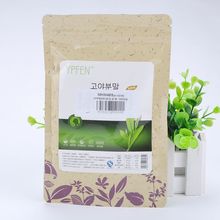


Products may interest you
100g Certified Premium Japanese Matcha Green Tea Powder 100% Natural Organic Slimming Tea Loose Tea Green Food
Item specifics:
Condition: New
Product Type: Green Tea
Weight: 100g
How to make a bowl of Matcha?
1. Rinse the cup with hot water, let the matcha come to room temperature and sift through a fine strainer
2. Using a bamboo tea scoop, place 1 1/2 to 2 teascoops of matcha into the tea bowl; or, measure out a rounded 1/2 teaspoonful. Adjust the amount of matcha to your taste.
3. Add about 1/4 to 1/3 cup of hot simmering purified water. This is a guideline for a typical bowl of tea; amounts can be adjusted to your preference.
4. Briskly whisk the tea and hot water using a bamboo tea whisk. Begin slowly to dissolve the matcha, then move very briskly back and forth as fast as you can in the middle of the tea bowl. The whisk should be vertical and barely touching the bottom of the bowl. When a soft light foam has developed, slowly lift the whisk from the center of the bowl.
5. Drink the matcha immediately.
About Matcha
Matcha is a variety of fine, powdered green tea used particularly in the Japanese tea ceremony, as well as to flavour and dye foods such as mochi and soba noodles, green tea ice cream and a variety of wagashi (Japanese confectionery). Matcha is made from shade-grown tea leaves also used to make gyokuro, unlike other forms of powdered tea, such as powdered sencha.
History
In Tang Dynasty China (618-907), tea leaves were steamed and formed into tea bricks for storage and trade. The tea was prepared by roasting and pulverizing the tea, and decocting the resulting tea powder in hot water, adding salt. In the Song Dynasty (960-1279), the method of making powdered tea from steam-prepared dried tea leaves, and preparing the beverage by whipping the tea powder and hot water together in a bowl became popular. Preparation and consumption of powdered tea was formed into a ritual by Zen Buddhists. The earliest Chan monastic code in existence, entitled Chanyuan qinggui (Rules of Purity for the Chan Monastery, 1103), describes in detail the etiquette for tea ceremonies. A bowl of matcha on a black lacquered tray with a traditional sweetZen Buddhism and, along with it, the Chinese methods of preparing powdered tea were brought to Japan in 1191 by the monk Eisai. Powdered tea was slowly forgotten in China, but in Japan it continued to be an important item at Zen monasteries, and became highly appreciated by others in the upper echelons of society during the 14th through 16th centuries. Along with this development, tea plantation owners in Uji perfected techniques for producing excellent tea for matcha. It was thus able to live on in Japan, develop, flourish, and gradually giving rise to the iconic Japanese Tea Ceremony we know today.
Production
The preparation of matcha starts several weeks before harvest, when the tea bushes are covered to prevent direct sunlight. This slows down growth, turns the leaves a darker shade of green and causes the production of amino acids that make the resulting tea sweeter. After being picked, fresh tea leaves are processed the same day. These tea leaves go through six steps: steaming, drying, sorting, drinding with a stone mill. After harvesting, if the leaves are rolled out before drying as usual, the result will be gyokuro (jewel dew) tea. However, if the leaves are laid out flat to dry, they will crumble somewhat and become known as tencha. Tencha can then be de-veined, de-stemmed, and stone ground to the fine, bright green, talc-like powder known as matcha. It takes one hour to grind 40g (1.41 oz) of top-quality Matcha with a stone mill. The result is a finely-textured powder.
Grades
Fine matcha uses the best leaves. These are found in the tips of the green tea tree (Camellia Sinensis), otherwise known as the flush or new growth. Storage, the stone grind, and age can all effect the quality of your maccha. The stone grinding process is an artisan technique and a bad grind can ruin otherwise premium matcha. Humidity, time, and strong odours also have the potential to ruin your tea.
The higher the grade, the:
sweeter it is (more amino acids)
smoother the texture
more vibrant it is
the “greener” the aroma (chlorophyll)
fuller it feels in the mouth
The lower the grade, the:
more bitter it is (more tannin)
coarser the texture
more earthy coloured it is
the shorter the finish
dryer it feels in the mouth
We at have gone to great lengths to locate only the finest teas available and have hand picked and personally chosen our teas after directly visiting the tea farms and speaking with the owners. Dragon Tea House’ top grade matcha use fresh leaves plucked in organic tea garden in early spring, it is then ground by stone other than machine. The product reaches 1600 mesh untrafine which represents top quality on the market. We deal directly with the farmers so that our green tea goes straight from the farm to your doorstep. Open our fresh sealed matcha and allow the fragrance to permeate your senses. Allow the smell of the freshly harvested tea to uplift your mind and transport you to the cascading tea fields.
Brewing Guide
A small amount of matcha is placed into the bowl, traditionally using a bamboo scoop called a chashaku, then a modicum of hot (not boiling) water is added. The mixture is then whisked to a uniform consistency, using a bamboo whisk known as a chasen. There must be no lumps left in the liquid, and no ground tea should remain on the sides of the bowl. Because matcha can be bitter, it is traditionally served with a small sweet.
Usucha, or thin tea, is prepared with half a teaspoon of matcha and approximately 75 ml (2.5 oz) of hot water, which can be whisked to produce froth or not, according to the drinker’s preference (or to the traditions of the particular school of tea). Usucha creates a lighter and slightly more bitter tea. 100g yields about 60-70 servings.
Package Included:
1 x 100G Green Tea Matcha Powder



Services Information
We usually ship orders in 72 hours when payment is verified.
If you have any problems about the order, please just contact us. We try our best to help!

0 out of 5 (0 Ratings)
| Positive (0%) |
5 Stars (0)
|
|
4 Stars (0)
|
|
| Neutral (0%) |
3 Stars (0)
|
| Neutral (0%) |
2 Stars (0)
|
|
1 Star (0)
|
| Name | Rating | Feedback |
|---|
| Shipping Company | Shipping Cost | Estimated Delivery Time |
|---|---|---|
| 3 - 7 days | ||
| 3 - 7 days | ||
| 5 - 14 days | ||
| Post Air Mail | Free Shipping | 15 - 45 days |
| Return Policy | If the product you receive is not as described or low quality, the seller promises that you may return it before order completion (when you click "Confirm Order Received" or exceed confirmation timeframe) and receive a full refund. The return shipping fee will be paid by you. Or, you can choose to keep the product and agree the refund amount directly with the seller. N.B.: If the seller provides the "Longer Protection" service on this product, you may ask for refund up to 15 days after order completion. |
|---|---|
| Seller Service | On-time DeliveryIf you do not receive your purchase within 60 days, you can ask for a full refund before order completion (when you click "Confirm Order Received" or exceed confirmation timeframe). |
Most Popular from Category
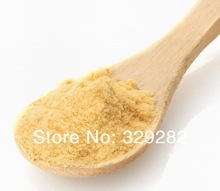
250g Papaya powder tea,organic papaya powder,Health tea,slimming tea,organic tea,Free Shipping
US $24.99 / piece
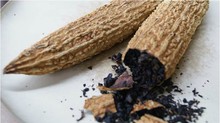
Anxi tie kuan yin tea cellaring oolong tea bitter gourd tea 500g exquisite gift box set
US $8.98 / lot

100g Jasmine Flavor Phoenix Eye * Supreme Organic Handmade Green Tea
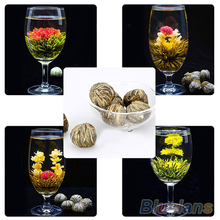
4 Balls Chinese Artisan Different Handmade Blooming Flower Green Tea 02M3
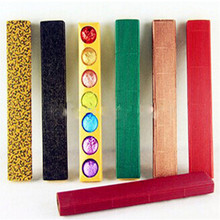
Tea More Than 50 Years Old PU ER Puerh Pu er Tea Pu erh Pu’er Puer Made in 1962 year Tea Brick Lose Weight Tea Free Shipping

The old wuyi black tea Lapsang souchong paulownia shut Black tea The gift of tea china tea organic food
US $9.90 / piece
online shopping, buying directly from manufacturers?
- Go to Alibaba.com and enter the wanted item into search field.
- Having made your choice, click "Contact supplier" button on the right
- On the next page enter your request and click "Send" button.
- Upon clicking you will be asked to get registered. Do it and wait for the reply.
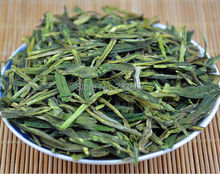
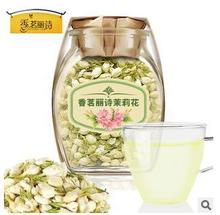
 ▼
▼
